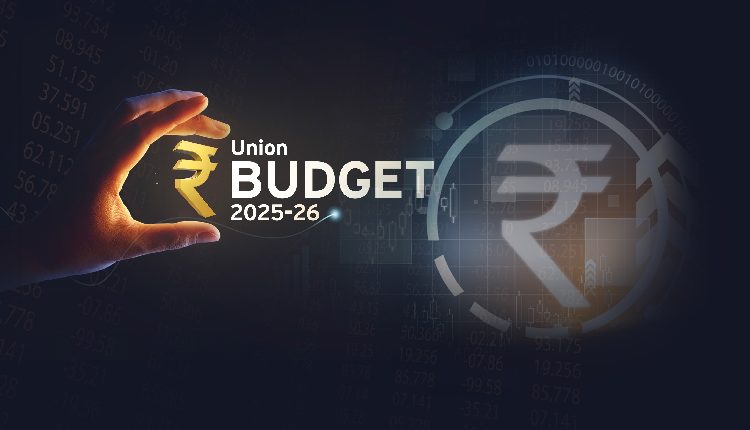How is the Union Budget 2025-26? Is it a balanced one driving growth across industries?
Will it steer the country towards its bigger goal of becoming a developed nation? Listen to what the industry stalwarts have to say. – Editor
The Budget would place India on further accelerated net-zero emission paths and spur the country’s technological leadership
Niranjan Nayak
MD, Delta Electronics IndiaThe Union Budget 2025-26 lays down a strong foundation for India to transition towards becoming a sustainable, technology-driven, and self-reliant economy. The emphasis of the government on green energy, EV infrastructure, AI-led innovation, and digital transformation closely resonates with Delta’s aim to deliver energy-efficient, smart solutions that power the future.
This would place India on further accelerated net-zero emission paths and spur technological leadership for the country simultaneously. Higher penetration of clean mobility will be facilitated through investments in modernising smart grids and EV charging infrastructure.
Delta is placed to help since it leads the market for an EV charging and power solution. The PLI incentives for R&D and manufacturing under the scheme will further cement India’s position as a world manufacturing hub.
Delta continues to utilize its prowess in industrial automation, power electronics, and smart infrastructure for contribution to the development of India. We are hopeful that together with industry stakeholders and policymakers, these budgetary allocations will take on a shape where the vision is turned into an actual path leading to a sustainable, digitally empowered, & future-ready India.
A progressive and growth-oriented budget with a clear focus on boosting India’s manufacturing capabilities and promoting self-reliance
Rohit Saboo
President & CEO, NBC BearingsThe Union Budget 2025-26 is a progressive and growth-oriented budget with a clear focus on boosting India’s manufacturing capabilities and promoting self-reliance under the Atmanirbhar Bharat mission. The introduction of the National Manufacturing Mission across industries of all sizes is a much-needed initiative that will strengthen the “Make in India” movement, especially in sectors like electric vehicles (EVs), batteries, and advanced manufacturing. These policy measures will help reduce India’s dependency on imports for critical components while enhancing the domestic supply chain.
The increased credit guarantee cover and targeted investments for MSMEs are welcome steps that will fuel the growth of this vital segment, which employs over 75 million individuals. Financial support and easier access to credit will empower MSMEs to modernize, scale operations, and contribute more significantly to the manufacturing ecosystem. Since many of our suppliers fall under the MSME classification, we are optimistic about the positive ripple effects this support will create across our value chain.
Sustainability and green manufacturing have also received renewed focus, aligning well with the growing global emphasis on reducing carbon footprints. Initiatives in renewable energy, battery storage, and green hydrogen will complement our own efforts at NBC Bearings, such as generating over 10 MW of solar power, conserving more than 6 million liters of water annually, and operating with zero wastewater discharge. For the manufacturing sector, the emphasis on digital transformation and skill development is crucial. The budget’s focus on upskilling initiatives will help India’s workforce remain competitive and prepared for the demands of Industry 4.0 and emerging technologies such as AI, robotics, and advanced automation—areas that we at NBC Bearings have already integrated into our operations.
With a thriving domestic market and growing global footprint, India’s manufacturing sector is at a pivotal point. The budget’s measures will not only foster long-term growth and resilience but also help position Indian manufacturers as key players in the global arena. For NBC Bearings, this means new opportunities to collaborate with industries worldwide and contribute to India’s journey as a manufacturing powerhouse.”
The budget strengthens 5.7 crore MSMEs, contributing 36% to manufacturing and 45% to exports
G. Sakthikumar
Managing Director and Chairman of Schwing Stetter India & Convener of the ICEMA and Chairman of the Mechanization Committee for the Builders AssociationThe Union Budget 2025 sets a progressive path for infrastructure expansion, emphasizing investments in roadways, airways, and railways while enhancing Public-Private Partnerships (PPP). The ₹1.5 lakh crore interest-free loan for states will accelerate development and boost economic growth. A major highlight is the plan to connect 120 new airports over the next decade, improving regional connectivity, trade, and mobility. The budget also strengthens 5.7 crore MSMEs, which contribute 36% to manufacturing and 45% to exports, by expanding credit support for micro enterprises.
This budget fuels the Make in India initiative, driving construction and manufacturing industry growth, generating employment, and reinforcing India’s economic resilience while unlocking new opportunities for sustainable development and prosperity.”
The increase in turnover and investment threshold limits for MSMEs is a welcome move
Kirti Rathod
Chairman and Managing Director, Delux BearingsAgriculture Sector significantly benefited farmers, providing them with more cash in hand. This financial boost is likely to encourage farmers to invest in technological upgrades, creating a surge in demand for tractors and rotavators. This, in turn, positively impacts the automobile and bearing industry as the demand for agricultural machinery increases.
The increase in turnover and investment threshold limits for MSMEs is a welcome move. It will enable MSMEs to upgrade their production facilities, making them more productive and competitive on a global scale. This technological and quality enhancement will drive demand for high-quality bearings, benefiting our industry.
The introduction of Bharat Trade Net and export financing measures to protect exporters from defaulters in importing countries is a significant step. These initiatives will bolster the country’s export capacity and capabilities, indirectly benefiting the bearing industry by increasing the demand for export-quality machinery and components.
The zero duty on shuttle-less looms, knitting machinery, and technology to grow high-value cotton makes the textile machinery sector more competitive in exports. This policy indirectly benefits Delux Bearings as we supply bearings to OEMs in this sector, enhancing our market opportunities.
The current 18% GST on insurance, components, and repairs discourages timely vehicle maintenance. High costs lead vehicle owners to delay services and insurance renewals, resulting in increased breakdowns and accidents. A reformation of the GST percentage in this sector is much needed to enhance road safety, ultimately benefiting the automobile and bearing industry by promoting regular maintenance and reducing accident-related damages.
With continued policy support, India is poised to build a robust EV charging network
Akshit Bansal
Founder & CEO, StatiqThe 2025 Union Budget lays a strong foundation for India’s EV sector, with the National Manufacturing Mission providing crucial support for clean-tech industries, including EV batteries and high-voltage transmission equipment. This initiative will strengthen domestic manufacturing, reducing import dependence and fostering a self-reliant EV ecosystem under the ‘Make in India’ vision. The government’s continued efforts to localize EV component manufacturing will further enhance supply chain resilience and cost efficiency, making EV adoption more viable.
Additionally, the new ₹10,000 crore infusion into the ‘Fund of Funds for Startups’ is a significant step in accelerating entrepreneurship in the EV space. Such initiatives will encourage innovation in EV charging infrastructure, making charging more accessible and efficient.
However, a revision in the GST structure for charging infrastructure is still needed. Bringing them in line with the 5% GST on EVs will further catalyze growth. With continued policy support, India is poised to build a robust EV charging network, ensuring seamless adoption of electric mobility across the country.
The budget sets a confident path for India’s transformation
Sebi Joseph
President, Otis IndiaThis Budget lays a strong foundation for India’s next phase of growth, with a sharp focus on agriculture, infrastructural expansion, digital transformation, and sustainable development. The reforms on personal income tax are going to drive consumption. The vision of Sabka Vikas over the next five years will be instrumental in driving balanced growth across industries and steering India towards its larger goal of becoming a developed nation 100 years after independence in 2047.
The thrust to further ‘Make in India’ through a National manufacturing mission, building national centres of skilling, and centre of excellence for AI, are progressive measures. Encouraging private-public partnerships in building the infrastructure is commendable. Continued attention to enhance connectivity across the country through operationalisation of new airports will boost the economy. The urban challenger fund would create new city growth hubs.
The budget sets a confident path for India’s transformation. The initiatives will not only strengthen India’s position as a global economic force but also enable a smarter, more connected, and more inclusive urban landscape. It offers a clear roadmap—one that ensures India is not just preparing for the future but actively shaping it.
We are optimistic that the budgetary measures will nurture a more robust manufacturing ecosystem
Ritesh Goenka
Managing Director, Damson TechnologiesFinance Minister Nirmala Sitharaman’s announcement of the National Manufacturing Mission in the 2025 Union Budget is a commendable step towards strengthening India’s manufacturing sector. By providing policy support and a structured framework, this mission is poised to enhance domestic production and self-reliance, aligning seamlessly with our objectives at Damson Technologies.
The emphasis on Micro, Small, and Medium Enterprises (MSMEs) as pivotal growth engines, responsible for 45% of India’s exports, is particularly encouraging. The introduction of customized credit cards for micro-enterprises and the enhancement of classification limits for MSMEs will undoubtedly facilitate greater financial inclusion and operational expansion.
Damson Technologies is a leading OEM and manufacturer of computer peripherals, accessories, and lifestyle products. Our flagship brand, JUST CORSECA, embodies innovation and quality. With a ₹200 crore investment, our state-of-the-art Ahmedabad facility produces high-quality audio systems and smart accessories, reducing import dependence and meeting domestic demand.
The government’s focus on clean technology manufacturing and attracting investments across various sectors resonates with our vision of integrating advanced innovations, including AI-powered products and app-based controls, into our offerings.
We are optimistic that these budgetary measures will nurture a more robust manufacturing ecosystem, enabling companies like ours to thrive and contribute significantly to India’s economic growth and global competitiveness.”
A commendable step towards the overall growth of our economy
Suyash Gupta
Director General of the Indian Auto LPG CoalitionBudget 2025 is a commendable step towards the overall growth of our economy, with a notable push towards clean tech and electric vehicle (EV) growth, as highlighted by the Finance Minister. However, it is important to note that in the realm of clean mobility, the focus has predominantly been on EVs, while other clean alternatives such as Auto LPG, hydrogen, and bio-fuel have been overlooked. Additionally, the budget could have done more to address the critical issue of urban pollution, which could be significantly alleviated by integrating these alternative fuels. As the detailed provisions are yet to be revealed, there was an expectation for announcements aimed at fostering the integration of cleaner and more affordable alternative fuels into public mobility policies.
Recognizing that achieving net-zero goals is a gradual process, leveraging readily available solutions like Auto LPG could have played a significant role in addressing both pollution in cities and promoting green growth, aligning with the budget’s envisioned objectives. The inclusion of Auto LPG, hydrogen, and bio-fuel in public mobility policies would have further diversified our clean energy portfolio and accelerated our transition towards a sustainable future.”
The exemption of certain capital goods for EV battery manufacturing is a welcome step
Ishaan Parwanda
Director, Trinity TouchI am glad to see the government’s strong focus on consumption in this year’s budget, as it will ultimately drive the EV market forward. Consumers will decide which EVs to buy, and this will have a significant positive impact on the industry. The exemption of certain capital goods for EV battery manufacturing is a welcome step, as it will help reduce production costs and make EVs more affordable in India.
With lower taxes putting more money into consumers’ pockets, we can expect higher spending in the EV sector. The tax exemption threshold, which stood at ₹2.5 lakh in 2014, has now risen to ₹12 lakh, freeing up substantial disposable income. Over the next three quarters, we should see this translate into greater momentum for charge point operators, two-wheelers, and four-wheelers. With multiple car manufacturers launching new EV models this year, the market is poised for significant growth.
That said, I had hoped for more on the capital expenditure front and additional exemptions for component manufacturers, particularly for smaller-scale projects. While many incentives exist for large-scale initiatives, similar support for smaller players is still missing. Nevertheless, this budget lays a strong foundation, R I am optimistic that further refinements will come in due course.”



 The Budget would place India on further accelerated net-zero emission paths and spur the country’s technological leadership
The Budget would place India on further accelerated net-zero emission paths and spur the country’s technological leadership A progressive and growth-oriented budget with a clear focus on boosting India’s manufacturing capabilities and promoting self-reliance
A progressive and growth-oriented budget with a clear focus on boosting India’s manufacturing capabilities and promoting self-reliance
 The increase in turnover and investment threshold limits for MSMEs is a welcome move
The increase in turnover and investment threshold limits for MSMEs is a welcome move With continued policy support, India is poised to build a robust EV charging network
With continued policy support, India is poised to build a robust EV charging network The budget sets a confident path for India’s transformation
The budget sets a confident path for India’s transformation We are optimistic that the budgetary measures will nurture a more robust manufacturing ecosystem
We are optimistic that the budgetary measures will nurture a more robust manufacturing ecosystem A commendable step towards the overall growth of our economy
A commendable step towards the overall growth of our economy The exemption of certain capital goods for EV battery manufacturing is a welcome step
The exemption of certain capital goods for EV battery manufacturing is a welcome step
